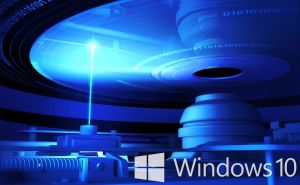 Windows 8 – a Hardware-Accelerated OS
Windows 8 – a Hardware-Accelerated OS
The Windows developers keep talking about some special Windows 8 feature – hardware acceleration. But be attentive, the idea is not about 3D graphics, but about something more everyday and casual – 2D graphics and text.
You must have heard about Quartz 2D Extreme introduced by Apple first in OS X 10.4, in hope to take some load off the CPU and make your graphics adapter help in rendering the regular OS interface: your windows, text, fancy effects, etc. As you probably know or might have heard, it is not that successful in accelerating those things; in fact, it may even cause video redraw issues or kernel panics (if you are a Windows user, the fabled Blue Screen of Death will get you the idea). As a result, it is disabled by default in the OS.
The Windows team, however, kept working on DirectX, improving its functions. First steps were done in Windows 7. Then two components were added to DirectX: one named Direct2D (for graphics – shapes, bitmaps, etc. in 2D), and the other being DirectWrite (for text). They were created for higher performance and better quality of 2D rendering. Windows 8 is supposed to take it even further.
Text
As Windows 8 is based on Metro, text is one of the main graphic components of the system. It is also one most often used: titles, icons, interface captions, web pages, letters, messages, etc. The developers continued to optimize the default text rendering for better performance and efficiency, alongside typographic quality and global text support. The graph illustrating the results of their work is given below.
Web pages, e-mail programs, instant messengers, and reading applications will surely benefit from the new DirectWrite.
2D Geometry Rendering
What is Geometry Rendering? It is used in creation of graphs, charts, tables, diagrams, user interface elements – the things we deal with quite often. Windows 8 improvements are focused on HTML5 Canvas performance and SVG technologies for Metro-style applications and web pages viewed with Internet Explorer 10.
Besides that, the CPU cost associated with the conversions made by DirectX to get the desired output is reduced in two ways: optimized implementation of tessellation* when simple geometries are rendered (rectangles, lines, ellipses) and improved performance while irregular geometry rendering is being done.
*Tessellation is the name given by developers to the following process: Direct2D takes instructions about what to draw from the application in the form of 2D figures, the figure's size, location, rendering specifics; then it converts the data into a set of triangles and commands, which are sent to Direct3D to generate the output.
The irregular geometry rendering is optimized with Target Independent Rasterization (TIR), which enables Direct2D to spend less CPU cycles on tessellation, making the process of providing drawing instructions to the GPU faster, with no sacrifice in visual quality. The only 'but' here is that TIR is only available for the new GPU hardware created for Windows 8 and supporting DirectX 11.1.
So, what we see is that developers promise Windows 8 to work faster and smoother, especially on touch devices. Hopefully their integration of hardware acceleration in the OS will be more successful than that of Mac. The fall will make it clear.
Picture credit: Microsoft, symbianworld.org.





Either the hardware has a feature or it does not. Microsoft badmouthing Windows 7 a.k.a. VISTA Second Edition will not change the hardware.